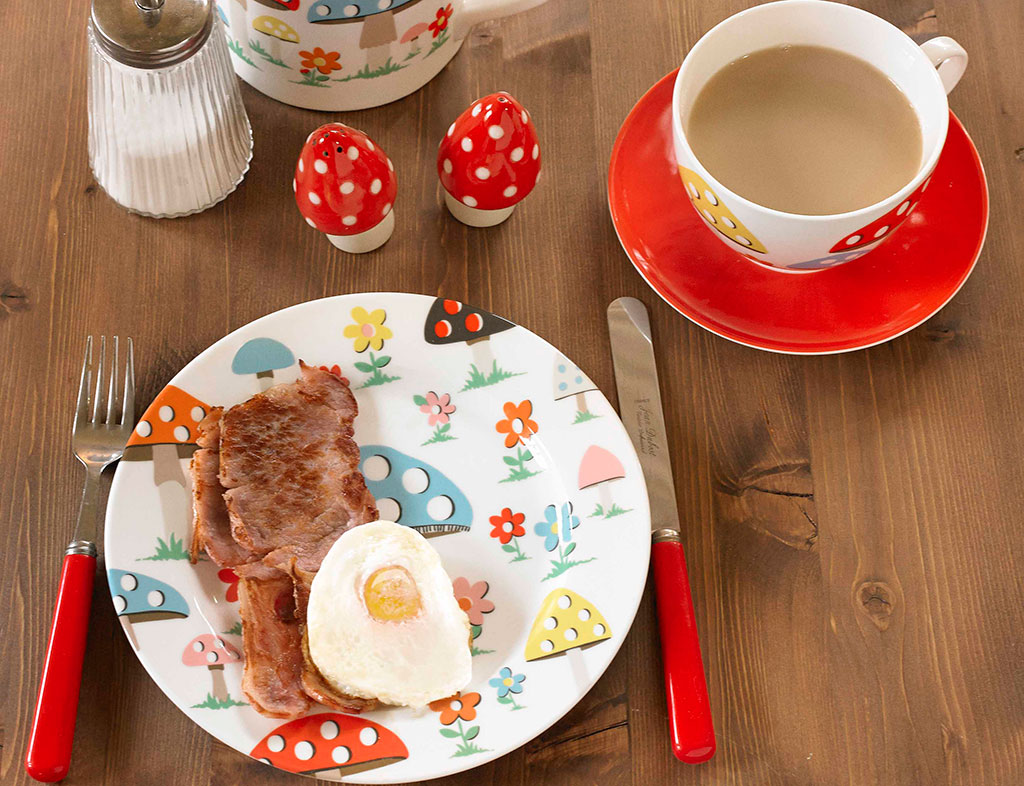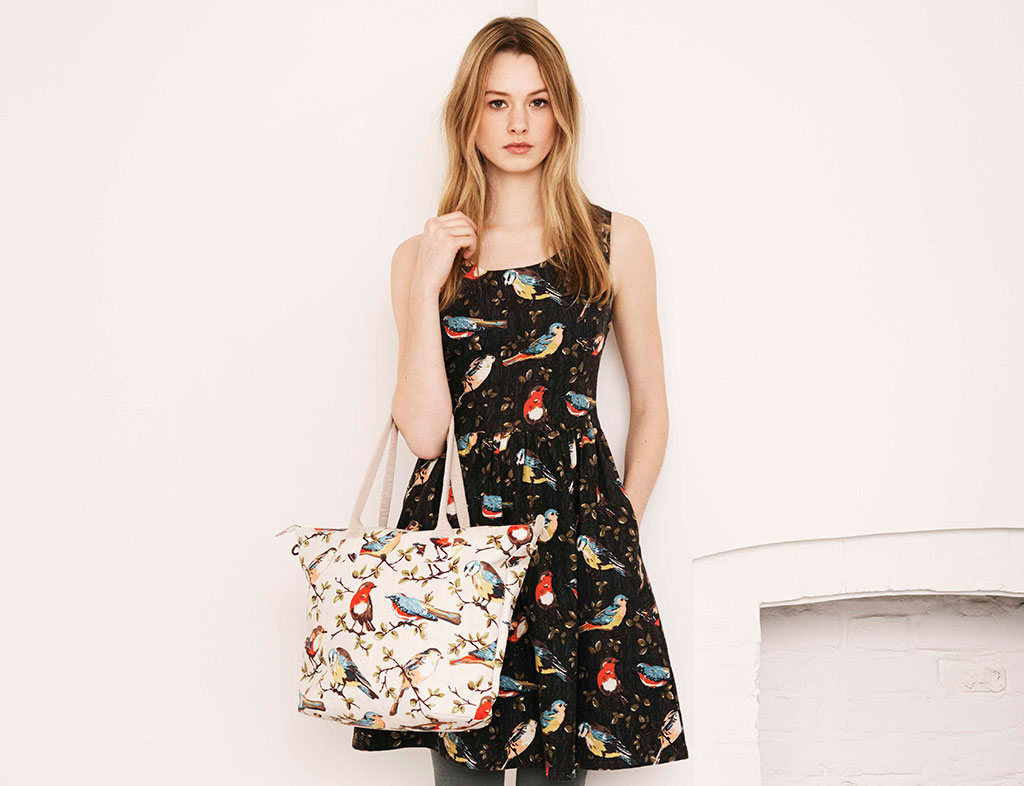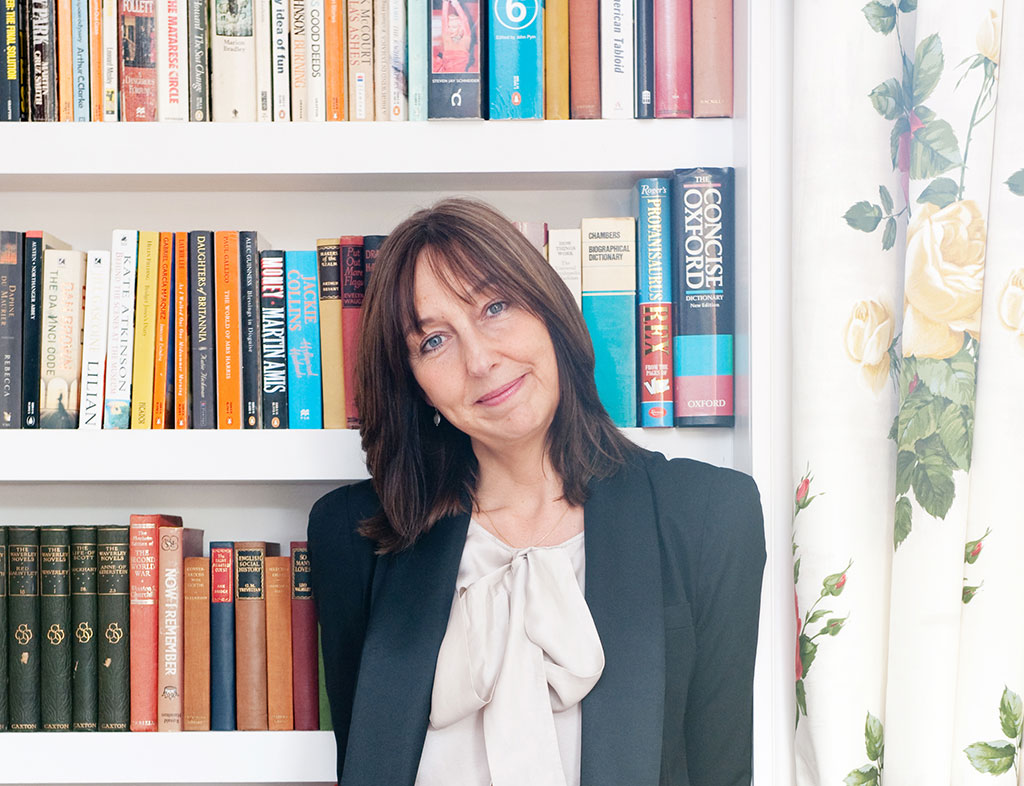When Cath Kidston opened her first retail space in London, no one predicted that in just 20 years her modest accessories and furniture business would have evolved into a £100m empire. The small shop in Holland Park, West London sold vintage fabrics, wallpaper and old furniture painted in bright colours. Fast-forward to today and the brand has announced its largest expansion to date: it is moving into a 7,000sq ft property in London’s Piccadilly – one of the most desirable addresses in the city. It still sells wallpaper and quirky furniture, but it is Kidston’s bags and accessories that have driven the brand from small start-up to stratospheric success.
A retro success
Though the Cath Kidston corporation is a model business, the designer has, more than anything, capitalised on a feeling. Kidston’s retro-feel prints, all with a mid-century flair, appeal to many generations: quaint florals and polka dots, all in pastels and bright colours, are modernised with varnishes and contemporary cuts. The same distinctive prints emboss teapots, umbrellas and furniture. Everything is saccharine and cutesy, but the nostalgic undertones are a dream of picturesque British country life, and are appealing for that very reason.
The Cath Kidston brand now has annual sales of over £105m, but Kidston herself insists the growth of her chintzy empire has been organic. She says that at the start of her solo operation in 1992 the first collection of girly aprons was a complete accident. She says: “I was planning to make wallpaper and furnishing fabrics with a side-line vintage shop. I ordered a lot of fabric from Eastern Europe. It was meant to come by the yard, but as they also had a bed linen factory, I asked the company if they would make some of the fabric into kid’s duvets. There was a misunderstanding and when it arrived, the fabric was all children’s duvets and pillowcases. To salvage the stock I started making aprons and tea towels.”
But it took time for Kidston to develop her unique brand identity. She says that, initially, her designs wouldn’t sell. “Our prints were neither old English floral, nor completely modern. It took some time for vintage patterns to become fashionable.”
Kidston herself has been behind the brand’s growth and development, even after the buyout by TA Associates. She admits that it has not always been smooth sailing. Kidston says being diagnosed with cancer in her mid-30s was the push she needed to develop the
business. After she was done with treatment and fully recovered, she abandoned her interior design ambitions to focus exclusively on her retail operations. “I had a lot of treatment and of course it was a very difficult time,” she said in an interview in 2006. “When I recovered, I realised that life is too short not to do something you really want to do. I felt absolutely that I could take a risk. I mean, it was a huge risk to stop doing the interiors work and concentrate on the shop. If it crashed and burned I would have been left with nothing, but I felt I had survived death, really, and it gave me this energy and confidence to go off and start Cath Kidston.”

Booming growth
Today, Cath Kidston has 61 retail outlets in Britain, and a further 58 franchised outposts, mostly in Asia. In 2010, the brand was bought by US private equity group TA Associates in a deal thought to have been worth £100m. Kidston has held on to a 30 percent stake, which she insists she has no plans to sell. The timing of this deal is nothing short of remarkable given the global economic outlook in 2010. Cath Kidston did during the downturn what many retailers can only dream of: she became a major global brand. “We sell very well in Japan,” explains Kidston. “We’ve even got a store in Kuwait. But the UK is still our biggest market. These are the people that fell in love with the brand first.”
By 2012, 20 years after the Holland Park launch, Cath Kidston had reported sales of £69m. It was a steady rise to super-stardom, though: in 2006, the brand already boasted sales of £12m, but the real boom came in 2009, when Cath Kidston products exploded in popularity. Profits jumped 60 percent that year, from £2.9m to £4.6m, with sales hitting £31.3m.
The brand capitalises on British kitsch. Today, it is described as a ‘global lifestyle brand’ as Kidston’s products range from homeware to clothing and accessories, but still retain that vintage feel. “We work hard to ensure that our products are pretty, practical and affordable,” says Kidston. “We also try to make the shopping experience fun and light-hearted, which we hope will give our customers a reason to be cheerful regardless of the economic climate.”
Evocative products
At first glance, Kidston’s products might appear out of place in a modern home; a toile de jouy oilcloth or a floral pastel ironing board cover may not seem like vital products, but as the British economy refusing to perk up, light floral tea-cosies may be just the trick. Steve Sharp, Marketing Director of Marks & Spencer, says: “Nostalgia always becomes more important when times are tough.” Indeed, Cath Kidston sales have bucked pretty much every retail trend on the high street; since 2008, homeware retailers have been some of the hardest hit British businesses as people stop moving home or renovating. According to accountancy firm BDO Stoy Hayward, homeware sales suffered steep decline before reverting to slow growth in 2012.
Cath Kidston’s distinctive aesthetic has led to a number of successful retail partnerships: in 2005, the company teamed up with Millets to launch a range of tents for the festival season; in the same year, a Cath Kidston Nokia mobile range went on sale in Carphone Warehouse. Most recently, there have been partnerships with Sky for a Cath Kidston flowery cable TV box and Roberts – the two vintage-inspired brands got together to produce a radio that would be quite at home in the bedroom of a seven-year-old girl in 1953.
Kidston’s rise to success has been compared to erstwhile floral queen Laura Ashley, whose prints were ubiquitous in the 1970s. Lorna Hall, retail editor of fashion trends website WGSN, says: “The brand keys into the same aesthetic, with its dreamlike nostalgia. For many women, it is a way to nest without all the hard work involved in nesting. Cath Kidston is the new Laura Ashley.” Though Laura Ashley fell out of favour with the public as the 1990s drew nearer, Cath Kidston is showing no signs of slowing.

Ahead of heritage
Cath Kidston was a precursor of the vintage movement that defines the British fashion market today. Since Cath Kidston’s products have flooded the high street, British brands from Marks & Spencer to Sainsbury’s have launched what they call ‘heritage’ campaigns, evoking nostalgic images of Britain. The trend exploded over the summer of 2012 when the Queen’s Diamond Jubilee festivities and the London Olympic Games bought into the aesthetic and further whet consumers’ appetite for anything claiming to be quintessentially British.
Some market analysts have suggested the boom in Cath Kidston’s popularity in the last five years is unsustainable, despite heavy investment in extra stores and new product lines. Retail Week Knowledge Bank has already noticed fast expansion can lead to brand fatigue and market saturation, because products lose the “element of exclusivity”. Indeed, it is true counterfeit Cath Kidston products – particularly copies of the distinctive bags – have already appeared on market stalls across Asia and Europe. But the opening of the new flagship Piccadilly store proves the brand has no plans to scale back.
Cath Kidston is a British success story. It has come to embody hope for the retail sector in a country still reeling from recession. Its sugary aesthetic might not be everybody’s cup of tea, but its booming sales and distinctive style suggest the advent of a new British (retail) empire.





